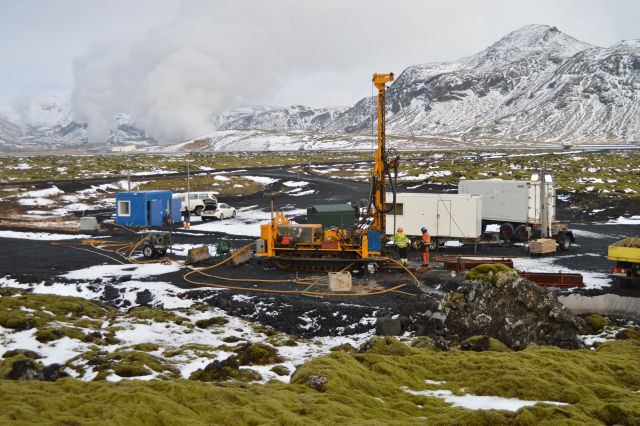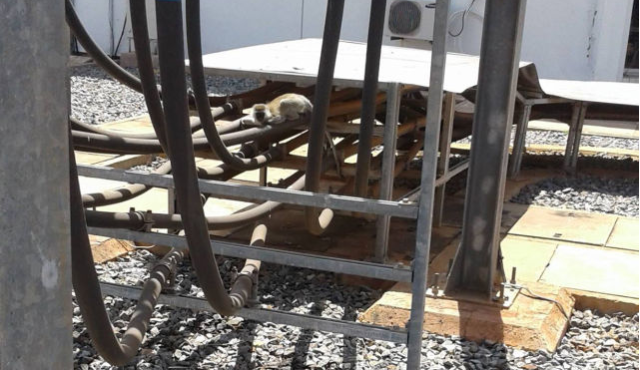Pilot project yields impressive results but may be difficult to replicate.

Lenovo is introducing the first commercial smartphone that uses Google’s Project Tango depth-sensing technology. The Lenovo Phab 2 Pro is coming in September for $499 and it will be available worldwide (including at Best Buy, and Lowe’s stores in the US).
The Phab 2 Pro is a smartphone with a big screen and a 3D camera that enables a set of virtual reality and augmented reality experiences by allowing you to scan your environment and mix digital items with your real-world environment, using Googles Tango technology (the company is dropping “project” from the name now that it’s ready for commercial applications).
Continue reading Lenovo Phab 2 Pro is the first phone with Google’s Tango 3D cameras at Liliputing.


Lenovo is introducing the first commercial smartphone that uses Google’s Project Tango depth-sensing technology. The Lenovo Phab 2 Pro is coming in September for $499 and it will be available worldwide (including at Best Buy, and Lowe’s stores in the US).
The Phab 2 Pro is a smartphone with a big screen and a 3D camera that enables a set of virtual reality and augmented reality experiences by allowing you to scan your environment and mix digital items with your real-world environment, using Googles Tango technology (the company is dropping “project” from the name now that it’s ready for commercial applications).
Continue reading Lenovo Phab 2 Pro is the first phone with Google’s Tango 3D cameras at Liliputing.

Der Technikchef von Tele Columbus hat sich zum vollen Ausbau des Koaxialkabels bekannt. Es würden 10 GBit/s im Upload und im Download angestrebt. (Tele Columbus, Internet) 

Der Technikchef von Tele Columbus hat sich zum vollen Ausbau des Koaxialkabels bekannt. Es würden 10 GBit/s im Upload und im Download angestrebt. (
Tele Columbus,
Internet)

Now only 2-way SLI is going to be possible.

The Samsung Ativ Book 9 is a 2.1 pound notebook with a 12.2 inch, 2560 x 1600 pixel display. It measures 0.5 inches thick and has a 4,700 mAh battery that Samsung says should provide around 6 hours of battery life.
Released in 2015, the Ativ Book 9 has an underwhelming Intel Core M-5Y31 processor rather than a newer Core M Skylake chip… which means it’s not the most powerful laptop featured in today’s roundup of deals.
Continue reading Deals of the Day (6-09-2016) at Liliputing.


The Samsung Ativ Book 9 is a 2.1 pound notebook with a 12.2 inch, 2560 x 1600 pixel display. It measures 0.5 inches thick and has a 4,700 mAh battery that Samsung says should provide around 6 hours of battery life.
Released in 2015, the Ativ Book 9 has an underwhelming Intel Core M-5Y31 processor rather than a newer Core M Skylake chip… which means it’s not the most powerful laptop featured in today’s roundup of deals.
Continue reading Deals of the Day (6-09-2016) at Liliputing.

Fewer of the fish eggs hatch when there’s lots of plastic around, too.
Eine Smartwach mit Spracheingabe? Das könnte es mit dem Vibraphone bald geben. Das ist ein Vibrationsmotor, der umgebaut wurde: zum Mikrofon. (Wissenschaft, Smartphone) 

Eine Smartwach mit Spracheingabe? Das könnte es mit dem Vibraphone bald geben. Das ist ein Vibrationsmotor, der umgebaut wurde: zum Mikrofon. (
Wissenschaft,
Smartphone)


Google is rolling out an update for most phones running Android 4.4 or later which is designed to let your phone display notifications from nearby items.
It’s called Nearby, and Google says it could let you know when there are apps or Android features you may want to take advantage of. For example, if you’re near a Google Cast device or Android Wear smartwatch, you may see a notification asking if you want to set up those devices from your phone.
Continue reading Google launches Nearby for Android (again), to help you discover things that are… nearby at Liliputing.


Google is rolling out an update for most phones running Android 4.4 or later which is designed to let your phone display notifications from nearby items.
It’s called Nearby, and Google says it could let you know when there are apps or Android features you may want to take advantage of. For example, if you’re near a Google Cast device or Android Wear smartwatch, you may see a notification asking if you want to set up those devices from your phone.
Continue reading Google launches Nearby for Android (again), to help you discover things that are… nearby at Liliputing.

It’s doubtful that all of them are usable against active Twitter accounts.
Monkey dropped onto a transformer, knocking 180MW hydro plant offline for four hours.


 Der Technikchef von Tele Columbus hat sich zum vollen Ausbau des Koaxialkabels bekannt. Es würden 10 GBit/s im Upload und im Download angestrebt. (
Der Technikchef von Tele Columbus hat sich zum vollen Ausbau des Koaxialkabels bekannt. Es würden 10 GBit/s im Upload und im Download angestrebt. (


 Eine Smartwach mit Spracheingabe? Das könnte es mit dem Vibraphone bald geben. Das ist ein Vibrationsmotor, der umgebaut wurde: zum Mikrofon. (
Eine Smartwach mit Spracheingabe? Das könnte es mit dem Vibraphone bald geben. Das ist ein Vibrationsmotor, der umgebaut wurde: zum Mikrofon. (

